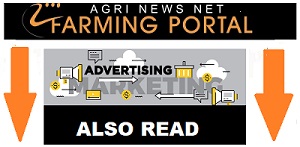-
Contamination Crisis: Research, including a 2021 Water Research Commission report, confirms a direct link between E. coli and other pathogens in irrigation water and fresh produce like spinach in regions such as Gauteng, Limpopo, North West, and the Western Cape. The Vaal River, Klip River (260 million liters of sewage daily), Olifants River (18 million liters daily), and Crocodile River (68 million liters daily) show alarmingly high E. coli levels, with 80 different strains, including pathogenic types carrying the stx2 gene, which can cause severe health issues like hemolytic uremic syndrome.
-
Sources of Pollution: Failing wastewater treatment plants (WWTPs) and sewage leaks, such as in Standerton, Mpumalanga, where untreated sewage flows into the Vaal River, are major contributors. Informal settlements without proper sanitation, like those along the Apies River, result in direct sewage dumping and runoff during rains. In KwaZulu-Natal, the 2022 floods exacerbated damage to WWTPs, with the Umgeni River recording E. coli levels up to 696,700 cfu/100ml in 2023, far exceeding the safe limit of 1,000 cfu/100ml.
 By 2030, we will need 50% more food, 45% more energy, and 30% more water
By 2030, we will need 50% more food, 45% more energy, and 30% more water
-
Impact on Agriculture: Irrigation accounts for 62% of South Africa’s water use, and contaminated water threatens food safety and compliance with stringent export standards, particularly for the EU market. In Mpumalanga’s Lowveld, rivers like the Vaalwaterspruit show high microbial and chemical pollution, risking market access for farmers. Contaminated water also clogs irrigation systems and introduces toxins into crops, reducing yields and quality.
-
Infrastructure Failures: The 2022 Green Drop Report revealed that 39% of South Africa’s wastewater treatment facilities are in critical condition, with 81% of the 144 municipalities achieving poor microbiological compliance (<70%). In eThekwini, facilities like the Northern WWTP have been unable to treat sewage effectively since 2016, polluting rivers like the Umgeni.
-
Health Risks: Elevated E. coli, Salmonella, and Shigella levels in rivers like the Umgeni and Msunduzi increase the risk of foodborne illnesses and diarrhea outbreaks, as seen in Durban in 2023, where 150 people were hospitalized. Antibiotic-resistant bacteria, with 95% of E. coli strains showing resistance to at least one antibiotic, further heighten public health concerns.
-
Economic Consequences: Contaminated produce could lead to export bans, threatening South Africa’s $13.2 billion agricultural export industry (2023). Local businesses and tourism, particularly along rivers like the Umgeni, suffer from sewage-related odors and environmental degradation, such as fish kills.

DISCLAIMER
The views and opinions expressed in this program are those of the writers and do not necessarily reflect the views or positions of any entities they represent. The information contained in this website is for general information purposes only. The information is provided by CRA and while we endeavour to keep the information up to date and correct, we make no representations or warranties of any kind, express or implied, about the completeness, accuracy, reliability, suitability or availability with respect to the website or the information, products, services, or related graphics contained on the website for any purpose. Any reliance you place on such information is therefore strictly at your own risk.
















